Prince William Sound photos
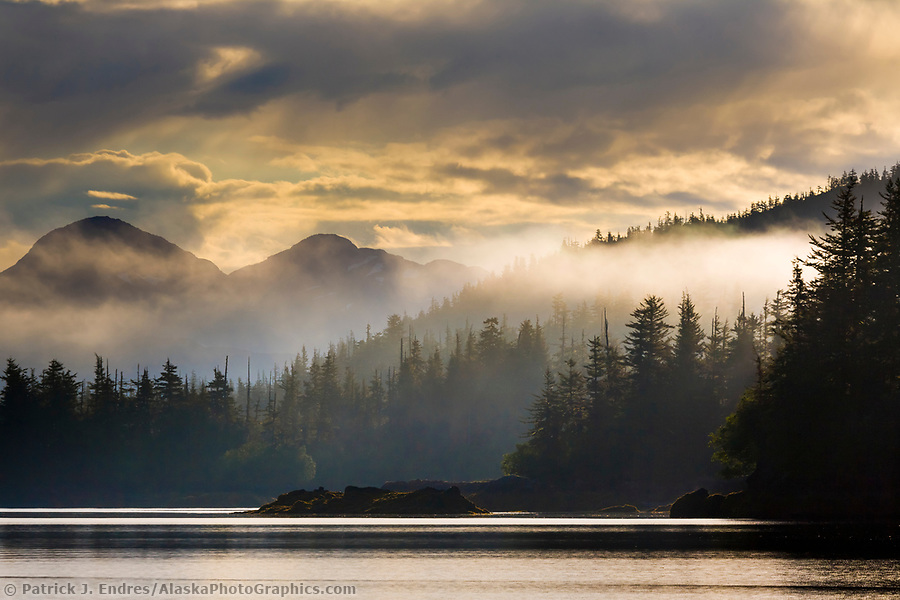
Coastal shore along western Prince William Sound, Chugach National Forest, Alaska. (Patrick J. Endres / AlaskaPhotoGraphics.com)
Getting around in Prince William Sound
Prince William Sound is a sound of the Gulf of Alaska situated on the southcentral coast of Alaska, on the east side of the Kenai Peninsula. Several small communities are located on the Sound, including Valdez, Whittier, Cordova, Chenega, and Tatitlek. The Alaska Marine Ferry system offers limited transportation service to significant communities since there is no road access to Cordova, Tatitlek, or Chenega. The expansive and beautiful Chugach National Forest borders it. I have spent decades photographing in this marine wonderland, and all Prince William Sound photos here can be licensed for commercial use or purchased as fine art prints for your home or office.
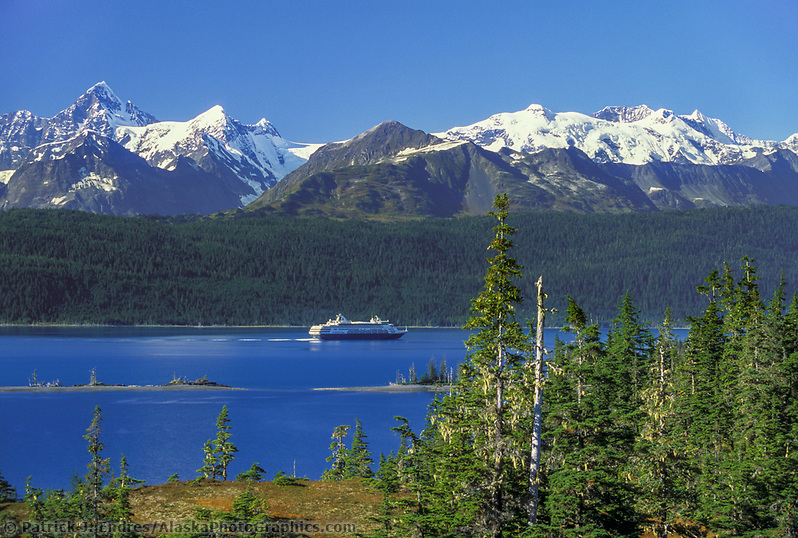
Holland America cruise ship, College Fjord, Chugach Mountains, Prince William Sound, Alaska (Patrick J. Endres / AlaskaPhotoGraphics.com)
Exxon Valdez Oil Spill
The area gained notoriety in 1989 when the oil tanker Exxon Valdez ran aground on Bligh Reef after leaving the port of Valdez (the terminus of the Trans Alaska Pipeline), resulting in the Exxon Valdez oil spill. The Exxon spill was one of the largest man-made environmental disasters ever to occur at sea, seriously affecting plants and wildlife. Its remote location made response efforts difficult. This further complicated matters in conjunction with inclement weather and poor response preparation. Scientific studies are still determining the lasting effects of this event on the environment.
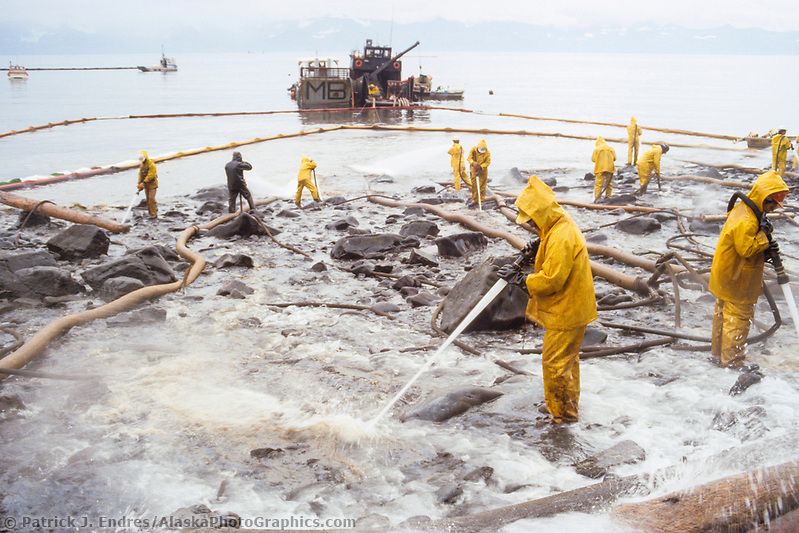
Exxon Valdez Oil Spill Clean-up crews use hot water hoses to wash oil from Point Helen, Knight Island, August 1989, Prince William Sound, Alaska (Patrick J. Endres / AlaskaPhotoGraphics.com)
Natural History & Natural Beauty
More than three thousand shoreland miles of bays, coves, and deep fjords comprise the prized seacoast region of this famous Sound. Exceeding the combined area of Massachusetts, Connecticut, and Rhode Island, this sheltered waterway contains the greatest diversity of habitats found along the entire Eastern Pacific Coast, including the world’s northernmost temperate rainforest.
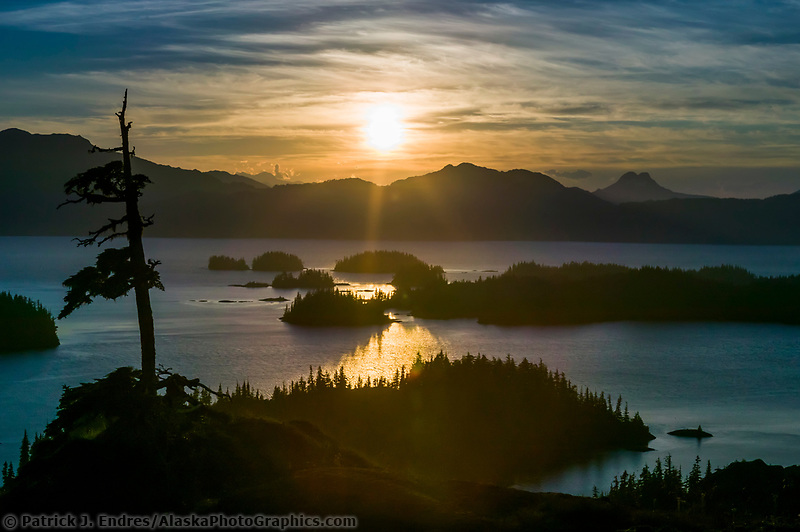
Western shore islands of Knight Island, Prince William Sound, Kenai mountains, Chugach national forest, Alaska (Patrick J. Endres / AlaskaPhotoGraphics.com)
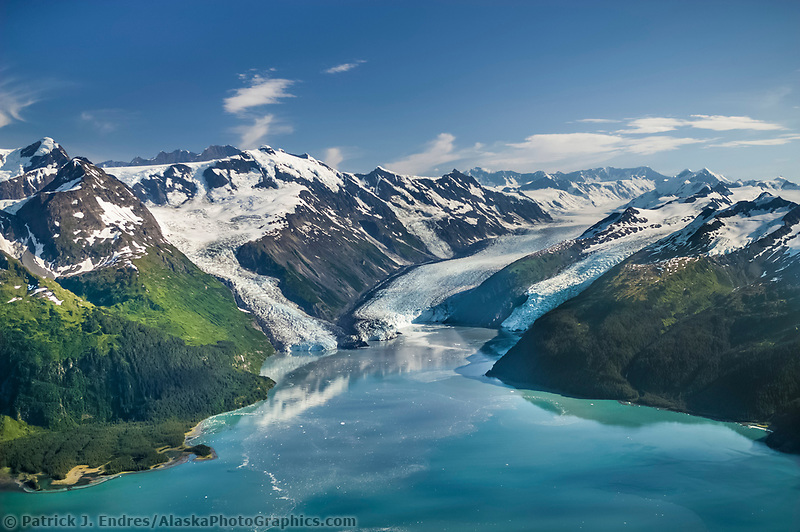
Aerial of the Chugach mountains and Barry, Coxe, and Cascade glaciers which meet in Barry Arm, Prince William Sound, Alaska (Patrick J. Endres / AlaskaPhotoGraphics.com)
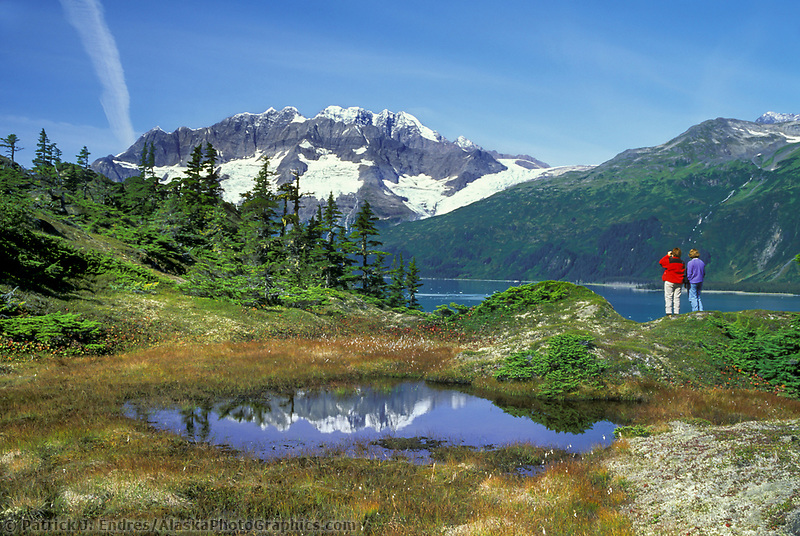
Tourist view Mt. Muir in the Chugach Mountain range, Prince William Sound, Alaska (Patrick J. Endres / AlaskaPhotoGraphics.com)
Chugach National Forest
The Chugach National Forest is a 5.6 million-acre National Forest that borders the waters and mountains surrounding Prince William Sound, including the eastern Kenai Peninsula and the delta of the Copper River. It is the second-largest forest in the U.S. national forest system and is the northernmost national forest. It was initially designated in 1907 by Theodore Roosevelt and was originally 23 million acres in size. Approximately one-third of the area of the forest is rocks and ice.
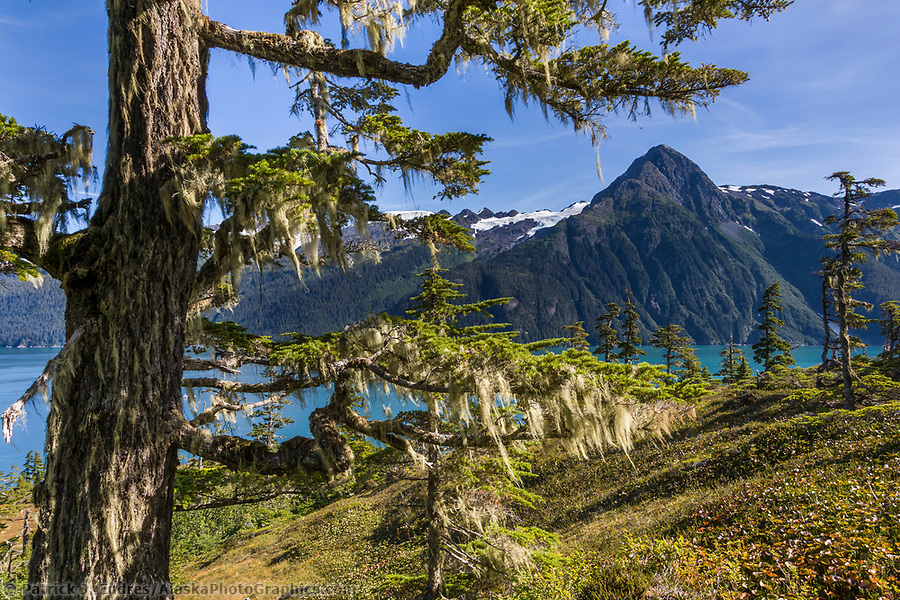
Old-growth Western Hemlock trees, Chugach mountains, Barry Arm, Chugach National Forest, Prince William Sound, Alaska. (Patrick J. Endres / AlaskaPhotoGraphics.com)
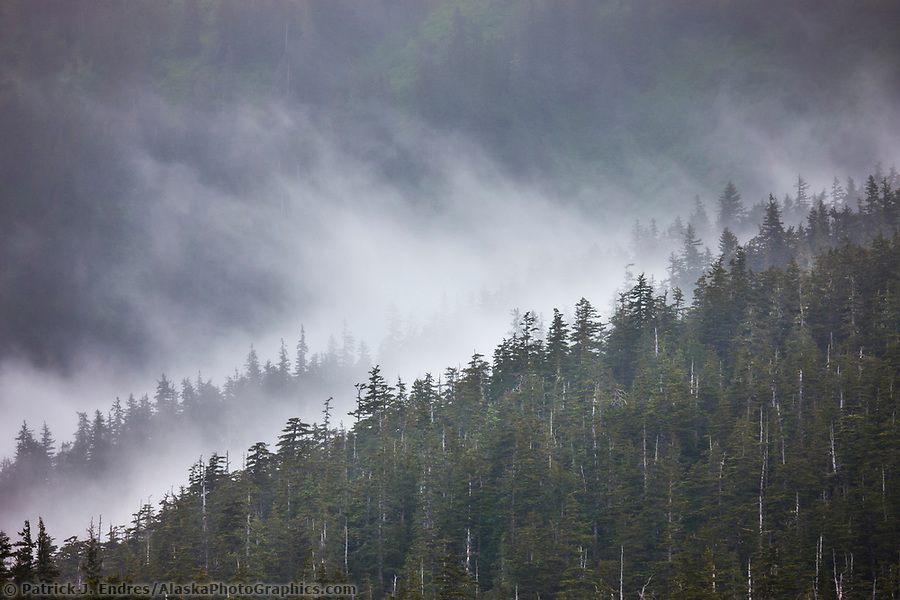
Fog and mist in the Chugach National Forest, Unakwik Inlet, Prince William Sound, Alaska. (Patrick J. Endres / AlaskaPhotoGraphics.com)
Glaciers of Prince William Sound
Prince William Sound is home to some of Alaska’s most spectacular and easily viewed glaciers. Tour boats and cruise ships take visitors sightseeing and wildlife-viewing excursions in the Sound. College Fjord and Harriman Fjord are common destinations because of their dramatic mountain scenery and great tidewater glaciers.
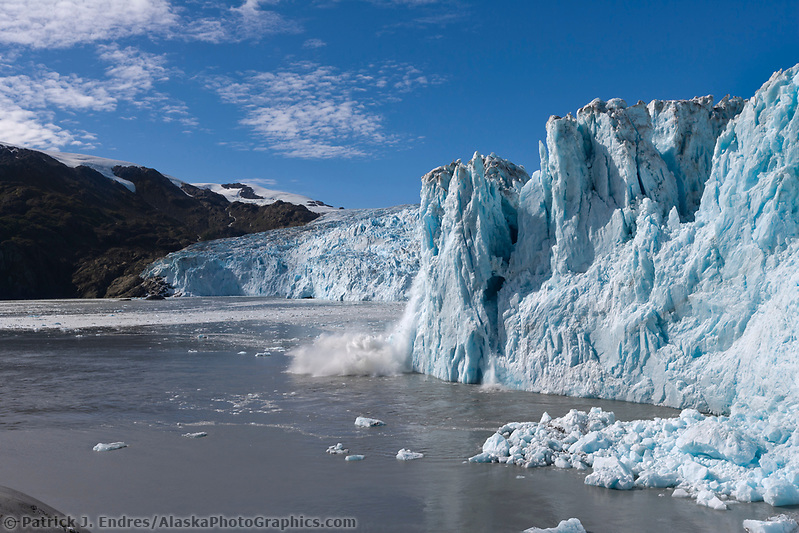
Chenega glacier calves ice into Prince William Sound, Alaska. (Patrick J. Endres / AlaskaPhotoGraphics.com)
Wildlife and marine life
The Sound’s calm and gentle waters provide homes for a thriving spectrum of marine and bird life. Sea otters, harbor seals, whales, sea lions, Sitka black-tailed deer, and many species of resident and migratory birds inhabit these protected waters. Abundant wildflowers decorate green meadows. Countless islands dot the seascape while ebbing tides unveil rocky shores and tide pools adorned with an array of intertidal life. Summer sunlight paints the fields and marshes with colorful plants.
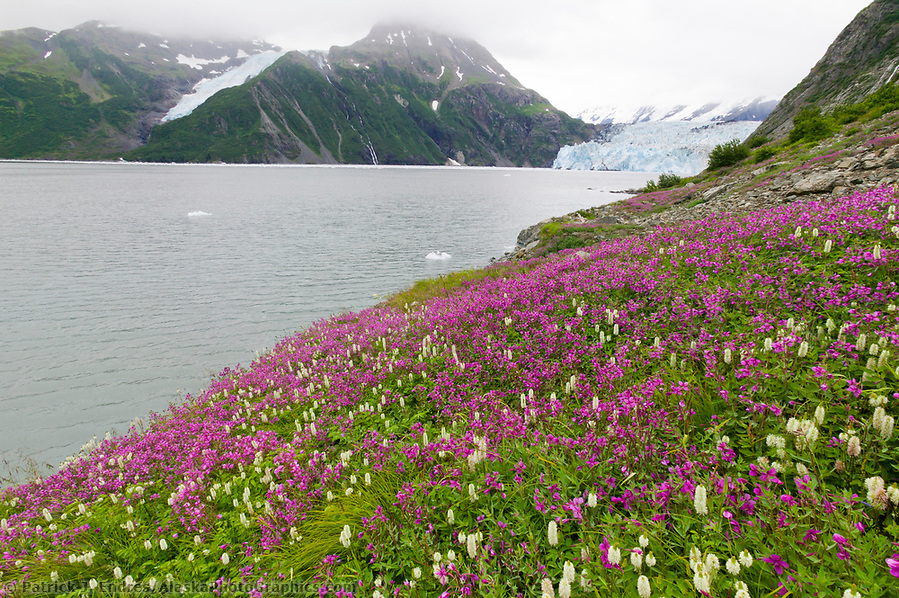
Dwarf fireweed, surprise glacier, Harriman Fjord, Prince William Sound, Alaska (Patrick J. Endres / AlaskaPhotoGraphics.com)
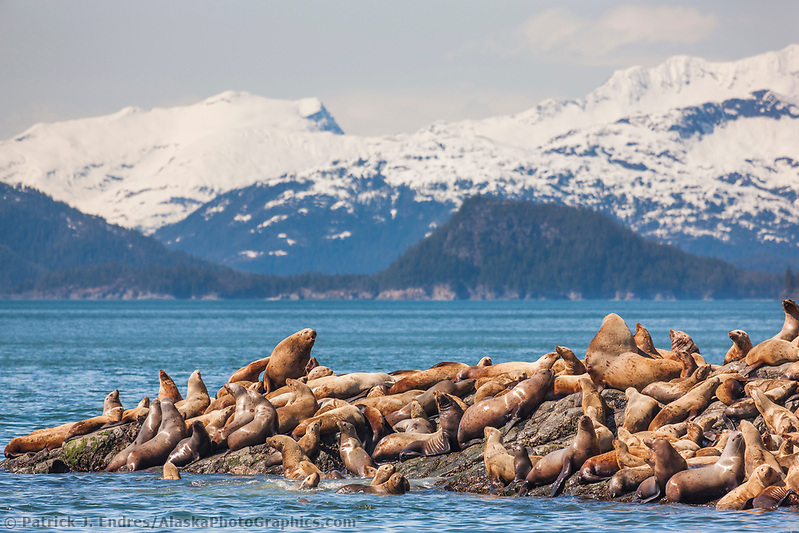
A group of Steller sea lions hauled out on a rocky outcrop on Bull Head, Glacier Island, Chugach mountains in the distance, Prince William Sound, Southcentral, Alaska. (Patrick J. Endres / AlaskaPhotoGraphics.com)
Wildlife of Prince William Sound
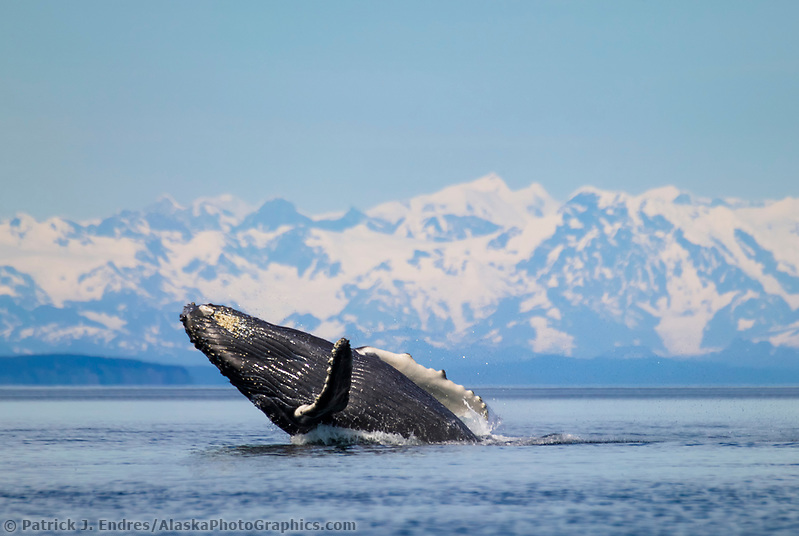
Humpback whale breaches, Chugach mountains, Montague straits, Prince William Sound, Alaska (Patrick J. Endres / AlaskaPhotoGraphics.com)
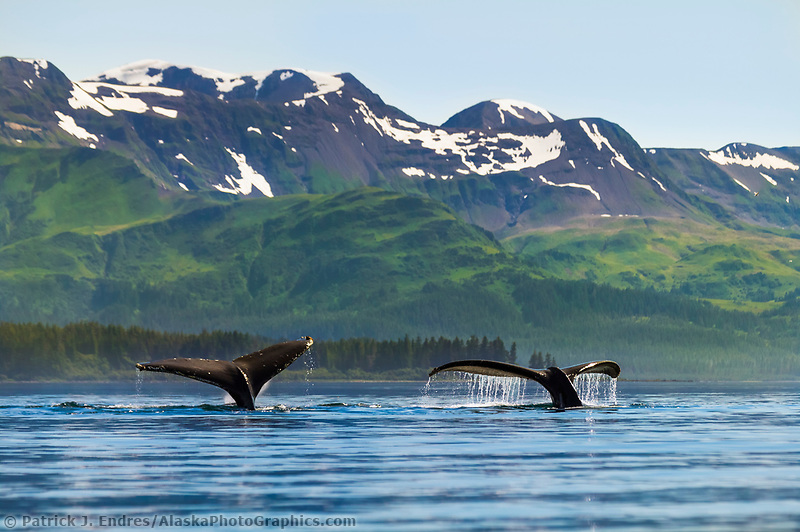
Humpback whales, Montague Island, Montague straits, Prince William Sound, Alaska (Patrick J. Endres / AlaskaPhotoGraphics.com)
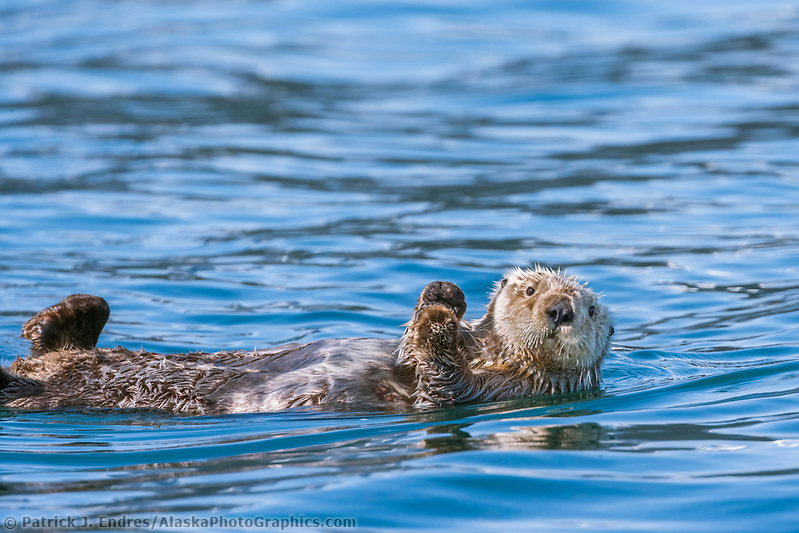
Sea otter, Port Wells, Prince William Sound, Alaska. (Patrick J. Endres / AlaskaPhotoGraphics.com)
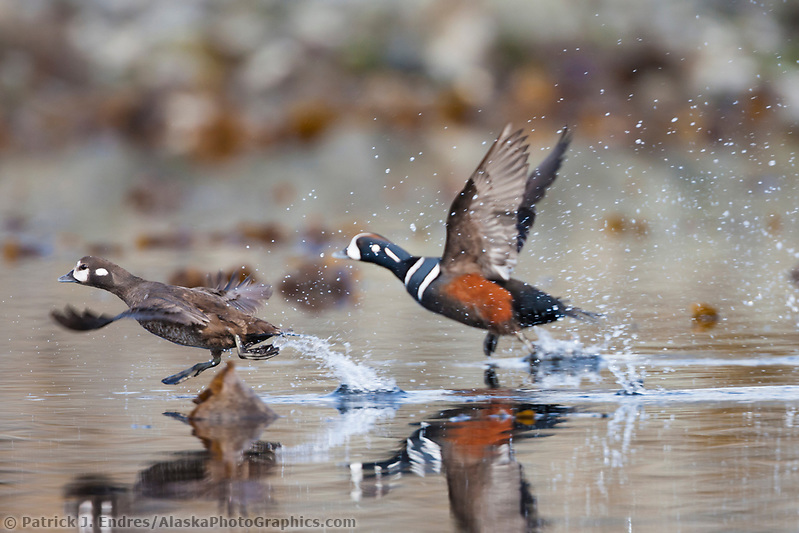
Harlequin ducks, Unakwik Inlet, Prince William Sound, Southcentral, Alaska (Patrick J. Endres / AlaskaPhotoGraphics.com)
